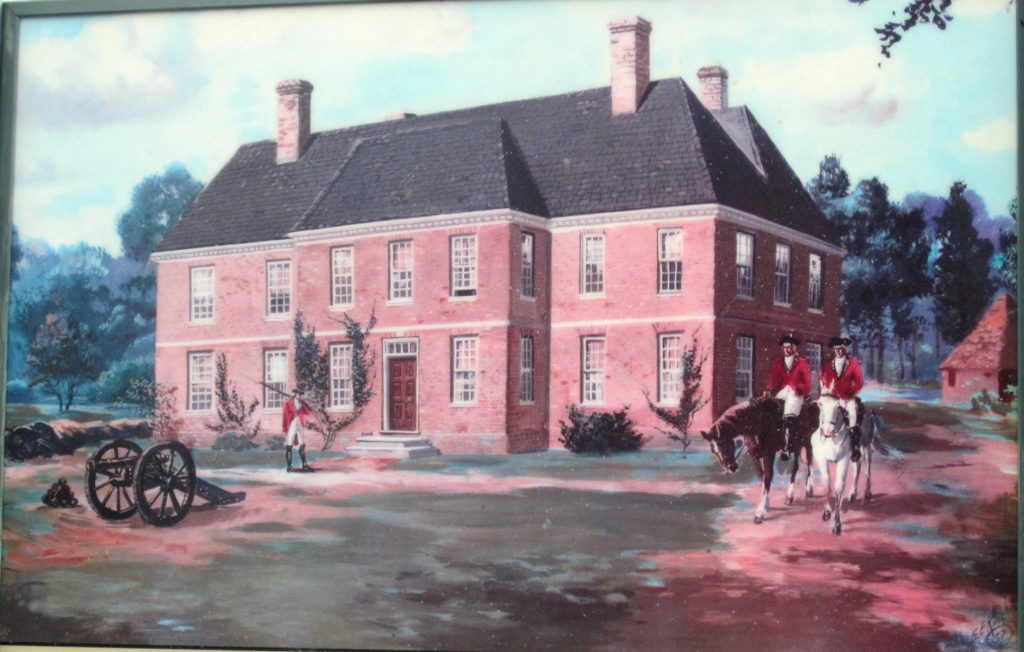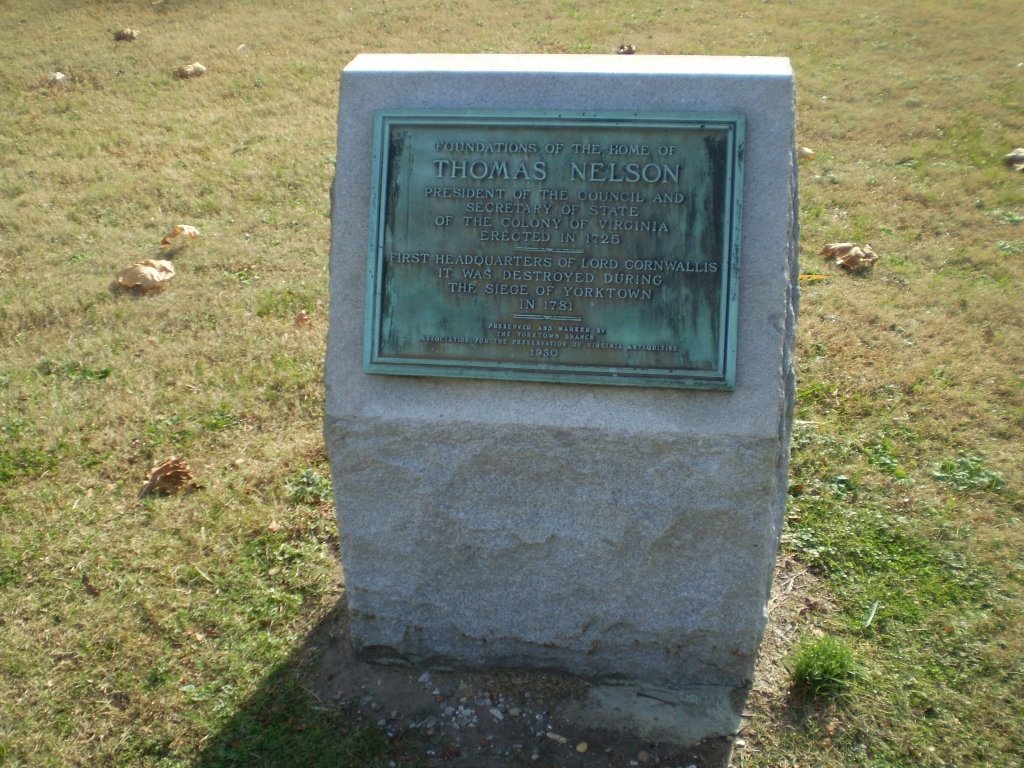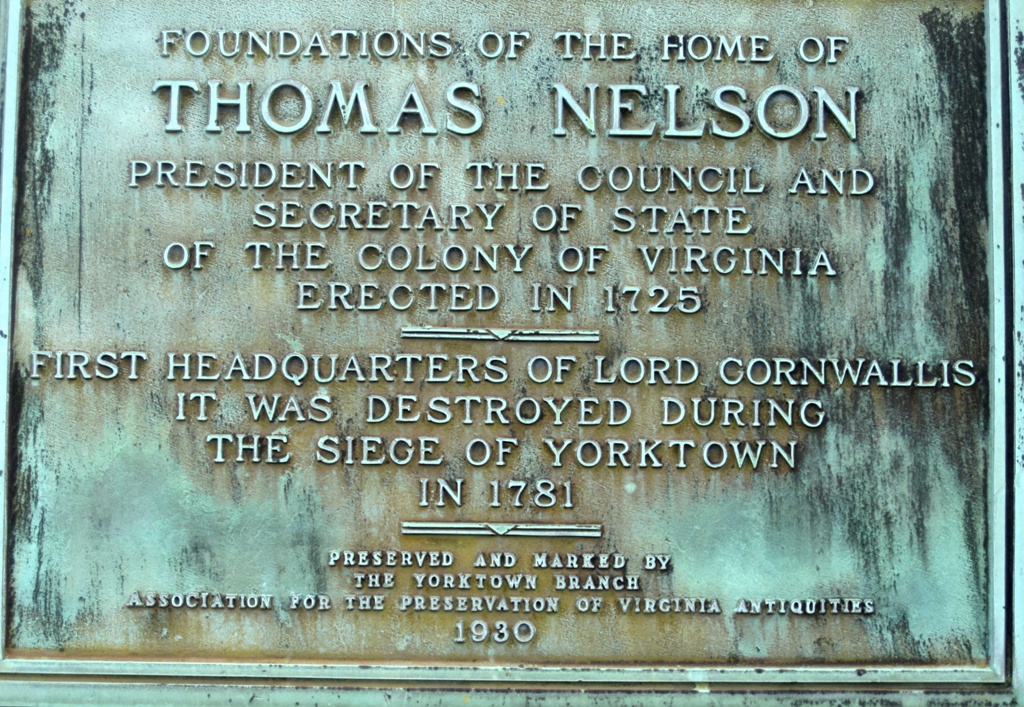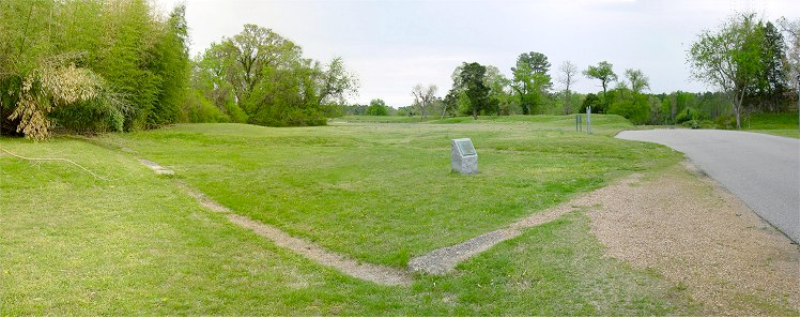SECRETARY NELSON’S PROPERTY
 Background
Background
Secretary Thomas Nelson built his home in Yorktown around 1725 not far from the homes of his father, Scotch Tom Nelson, and his brother, William Nelson. He was known as “Secretary” Nelson because of his long service as secretary to the royal government’s Council. During the battle at Yorktown, Secretary Nelson would be one of the few civilians to witness the bombardment.
Townspeople began to leave the commercial hub as war loomed. Yorktown was sure to be a target, with its high bluff over a deep water harbor. Americans wanted to use it to protect shipping, provide an offensive base for raids into the Chesapeake Bay and guard the state capital only 15 miles west. And “Secretary” Nelson’s house was the highest point in town, visible from a mile away.
Things only got worse when the British arrived. Gen. Charles Earl Cornwallis ordered the remaining townspeople out by Aug. 22, 1781, to reduce the competition for food for his men, and he ordered buildings taken down to clear the lines of sight for his artillery in case he was attacked.
Secretary Nelson stayed in his home at the southeastern end of Yorktown — near where the Yorktown Victory Monument stands today. When Cornwallis came to town, he put his headquarters in Nelson’s home.
The French and American forces arrived and began their bombardment of the town on Oct. 9. Fiery cannonballs punctured the roof and walls of Nelson’s sturdy brick house. Windows shattered. One of Nelson’s slaves was killed while standing inside the living room.
The attack on Nelson’s house did so much damage so quickly that Cornwallis moved into a sunken grotto at the foot of Nelson’s garden.
Nelson’s nephew, Gov. Thomas Nelson Jr., became worried for his uncle’s safety and asked Washington for a cease-fire. Cornwallis agreed to one. At noon on Oct. 10, a white banner went up from the British position and firing ceased so two British soldiers could escort the 65-year-old Secretary Nelson and a slave across the battlefield. Nelson suffered from gout and hobbled to safety over his own land where he had hunted in younger days. His home would not survive the conflict.
When the Association of Preservation of Virginia Antiquities (APVA) branch was established in Yorktown in 1921 there was interest in identifying and saving the Secretary Thomas Nelson home site. Mr. John F. Brown, owner of the site, uncovered the foundation and placed a marker on the site at his own expense. Apparently the Virginia State Highway Department in 1928 was planning to build through the foundations of the home. The Yorktown Branch of the APVA protested. Commissioner H. G. Shirley of the Highway Department was sympathetic and suggested the APVA Branch try to acquire the site. The site was donated to the Virginia APVA by Judge Ferris and the Peninsula Land Company. The bronze plaque was placed in July, 1930.


FOUNDATIONS OF THE HOME OF
THOMAS NELSON
PRESIDENT OF THE COUNCIL AND
SECRETARY OF STATE
OF THE COLONY OF VIRGINIA
ERECTED IN 1725
____________
FIRST HEADQUARTERS OF LORD CORNWALLIS
IT WAS DESTROYED DURING
THE SIEGE OF YORKTOWN
IN 1781
_____________
PRESERVED AND MARKED BY
THE YORKTOWN BRANCH
ASSOCIATION FOR THE PRESERVATION OF VIRGINIA ANTIQUITIES
1930
Today the site can easily be seen as one drives from the Yorktown Victory Monument toward the entrance to the Colonial Parkway. A small pull off provides an opportunity to read the marker. Take time to ponder the moment when artillery was fired into the home when America was fighting for independence.

Excerpt from the Daily Press, October 18, 2006 by Bentley Boyd
